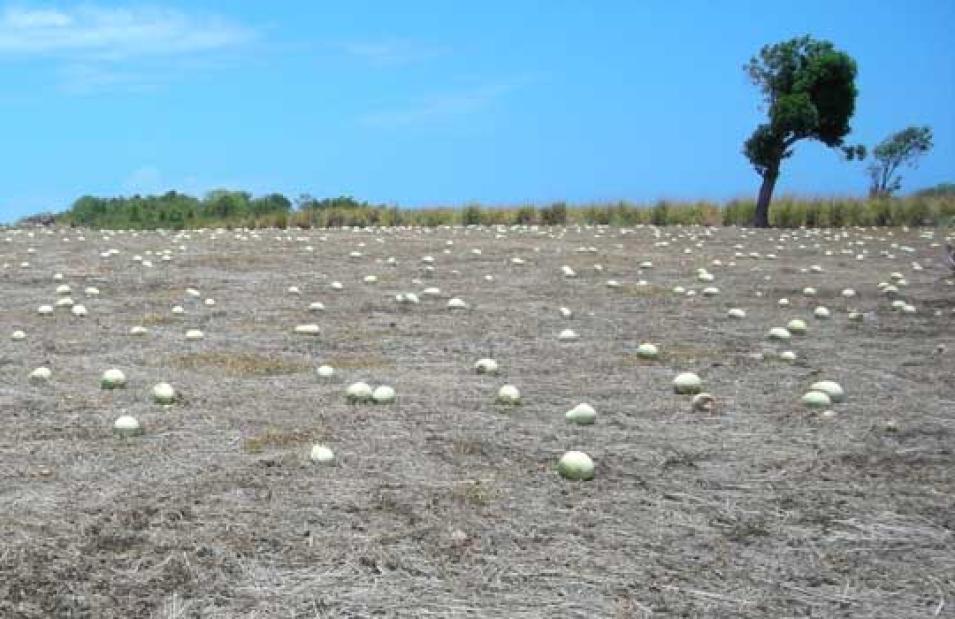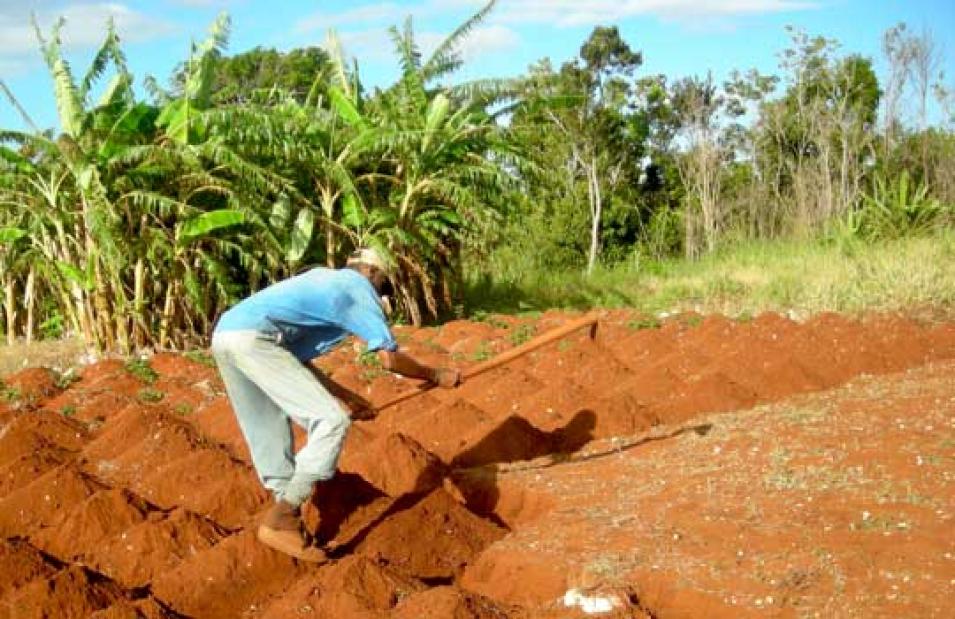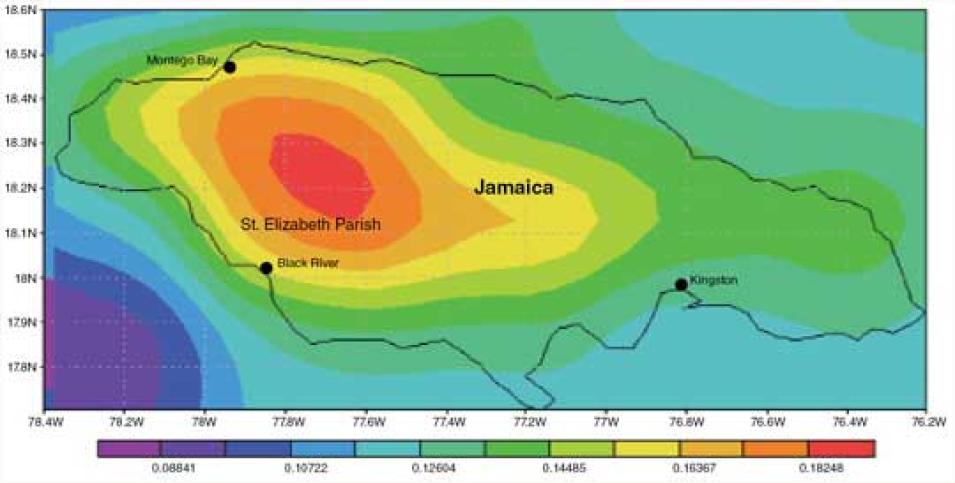The team made a breakthrough when they looked at the data through the farmers' eyes. Gamble said, "If we hadn't talked to the farmers and realized how important the early season is, we wouldn't have broken it into an early season and a late season." Most previous work had focused on the intensity and length of drought as the most threatening factors to crops. But for farmers, timing is critical. Misjudging a season by one week can undermine their ability to bring a mature crop to market, and to finance their next growing season. "So it made us look at the data in a different way and we found something very important, that drought is much more prevalent at the beginning of the year," Gamble said.
Hope of relief
But if the Jamaican government or relief organizations could help these farmers, when would they step in? The data on drought timing provided the answer. Gamble said, "We validated what the farmers said and it gives us a nice foundation. It gives us a way to not only address drought, but to address the early drought as compared to the later drought." Supplemental water delivery to farmers during this critical time, for example, could provide substantial relief. Campbell said, "So it shows you that what the farmers are experiencing in these communities is where we should be focusing our research."
Yet larger questions still loom. What are the best options for helping farmers adapt? Will drought get even worse in the future? To build a clear picture, Campbell continues to work with farmers and is expanding the study area to other agricultural regions in Jamaica. Meanwhile, Gamble and Curtis are busy analyzing satellite vegetation data to understand how drought affects local crops. The team plans to outfit fields with rain gauges and involve farmers in active climate monitoring. They hope that, by strengthening the view from space with what the farmers see in their fields, these questions too will be answered. Gamble said, "I can find a trend within that satellite data, but if the farmers aren’t worried about it, then that trend doesn’t matter."
References
Allen, T., S. Curtis, and D. Gamble. 2010. The midsummer dry spell’s impact on vegetation in Jamaica. Journal of Applied Meteorology and Climatology 49(7): 1,590–1,595, doi:10.1175/2010JAMC2422.1
Campbell, D., D. Barker, and D. McGregor. 2011. Dealing with drought: Small farmers and environmental hazards in southern St. Elizabeth, Jamaica. Applied Geography 31(1): 146–158, doi:10.1016/j.apgeog.2010.03.007
Gamble, D. W., D. Campbell, T. L. Allen, D. Barker, S. Curtis, D. McGregor, and J. Popke. 2010. Climate change, drought, and Jamaican agriculture: local knowledge and the climate record. Annals of the Association of American Geographers 100(4): 880–893, doi:10.1080/00045608.2010.497122
Related Links
NASA Goddard Earth Sciences Data and Information Services Center (GES DISC)
Tropical Rainfall Measuring Mission (TRMM)
GES-DISC Interactive Online Visualization and Analysis Infrastructure (Giovanni) website
Donovan Campbell
Scott Curtis
Douglas W. Gamble
| About the remote sensing data used |
| Satellite | Tropical Rainfall Measuring Mission (TRMM) |
| Sensor | TRMM Microwave Imager |
| Data sets | TRMM Level 3 Monthly Data Products |
| Resolution | 25 degree |
| Parameter | Precipitation |
| DAAC | NASA Goddard Earth Sciences Data and Information Services Center (GES DISC) |
| The images and data used in this study were acquired using the Giovanni as part of GES DISC. |
The photograph in the title graphic shows a Jamaican farmer spreading guinea grass over his field to help the soil hold in moisture. (Courtesy D. Campbell)


